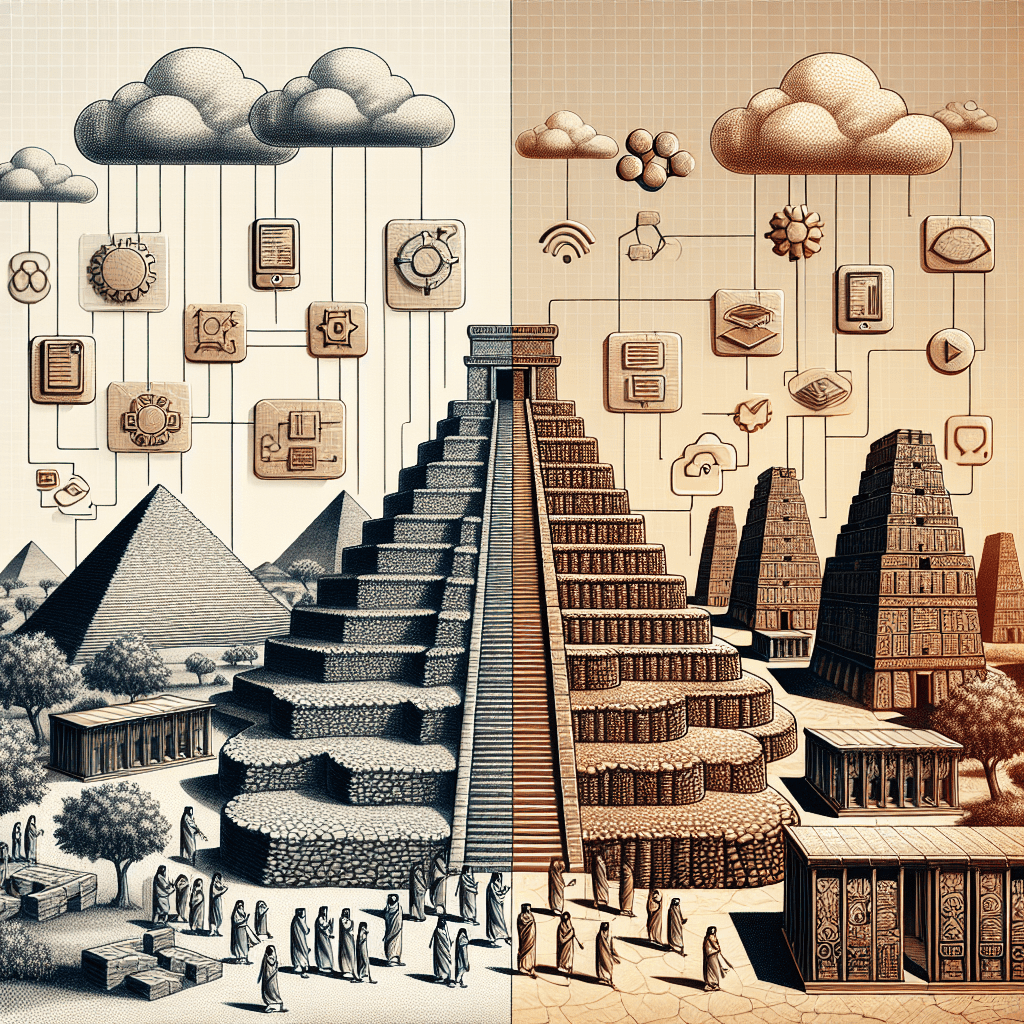Exploring the Connection between Ancient Sumerians and Modern SaaS Services
When we think of ancient civilizations, we often imagine grand pyramids, powerful empires, and mysterious rituals. However, there is one lesser-known ancient civilization that has surprising similarities to the modern world of technology: the Sumerians.
The Sumerians were one of the earliest civilizations in the world, inhabiting the region of Mesopotamia (modern-day Iraq) around 4000 BCE. They were known for their advanced knowledge in agriculture, writing, and commerce. On the other hand, Software as a Service (SaaS) is a relatively new concept in the world of technology, but it has quickly become a popular way for businesses to access software and services through the internet.
Innovation and Adaptability
One of the key similarities between the Sumerians and SaaS services is their ability to innovate and adapt to changing circumstances. The Sumerians were one of the first civilizations to develop a system of writing, known as cuneiform, which allowed them to keep records, track trade, and communicate with other regions. This invention revolutionized the way they conducted business and contributed to their success as a society.
Similarly, SaaS services are constantly evolving and adapting to meet the changing needs of businesses. With new technologies and trends emerging, SaaS providers are constantly updating and enhancing their services to stay ahead of the competition. This adaptability allows businesses to stay current and efficient in their operations, just like how the Sumerians were able to thrive by adapting to new developments.
Centralization and Collaboration
Another striking similarity between the Sumerians and SaaS services is their emphasis on centralization and collaboration. The Sumerians were one of the first civilizations to establish a centralized government and economy, which allowed for efficient communication and collaboration between different regions and cities. This centralization also led to the development of a standardized system of weights and measures, making trade and commerce easier and more efficient.
In a similar way, SaaS services centralize the storage and management of data and applications, making it easier for businesses to collaborate and streamline their operations. With cloud-based software, teams can work together seamlessly, regardless of their physical location, just like how the Sumerians were able to work together despite being spread across different cities.
Access to Resources
The Sumerians were able to thrive because of their access to resources such as fertile land, water, and trade routes. Similarly, SaaS services provide businesses with access to resources that they may not have been able to afford otherwise. With SaaS, businesses can access high-quality software and services at a lower cost, allowing them to compete with larger companies and expand their operations.
Conclusion
While the Sumerians and SaaS services may seem like vastly different concepts, they share many surprising similarities. Both emphasize innovation, centralization, and access to resources, which have contributed to their success in their respective eras. As we continue to rely on technology in our modern world, it’s fascinating to see how ancient civilizations like the Sumerians have influenced and shaped our current way of life.
So the next time you’re using a SaaS service, remember that the concept of innovation and collaboration is nothing new – it has been around for thousands of years, thanks to the forward-thinking minds of the ancient Sumerians.


